Introduction
Ensuring accuracy in property titles is essential for mitigating legal disputes and upholding ownership rights. A Correction Warranty Deed stands as a pivotal instrument designed to amend errors in an existing warranty deed, offering a precise and legally compliant reflection of property details. Whether addressing typographical mistakes or inaccuracies in property descriptions, this document plays a critical role in maintaining the integrity of property records.
Delving into the types of errors necessitating such corrections, the varied forms of correction deeds, their legal implications, limitations, and potential alternatives provides a comprehensive understanding of this indispensable tool in real estate transactions.
What is a Correction Warranty Deed?
A is a crucial legal document utilized to amend an that contains errors or inaccuracies. This instrument is designed to rectify mistakes such as incorrect names, asset descriptions, or other critical details that might affect . Unlike a new warranty deed, a does not transfer ownership; it merely clarifies and to ensure the accuracy and integrity of . This process helps in asset records, providing a clear and precise reflection of the intended ownership details.
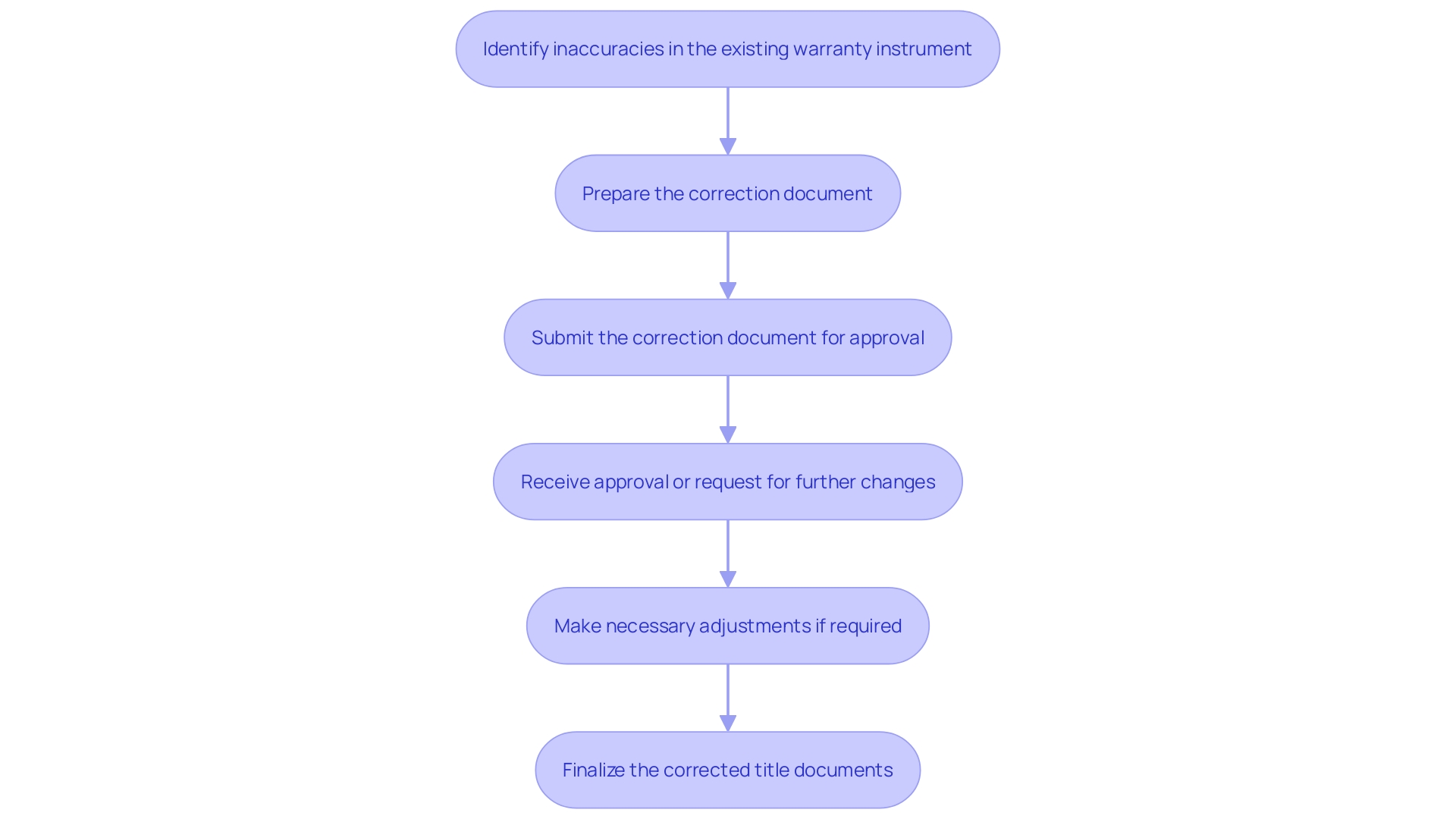
Types of Errors Requiring Correction Warranty Deeds
Frequent mistakes that require the use of a include typographical errors in the names of parties involved, inaccuracies in the official description of the asset, and misstatements regarding the nature of the ownership interest. These errors often stem from during the drafting process or misunderstandings among the parties involved. Recent developments in the sector, such as rising interest rates and construction costs, have increased the involving real estate, making precise documentation more crucial than ever. For instance, a Texas case highlighted the significance of when a misstatement led to a lengthy legal dispute, underscoring the importance of of all land details. 'Furthermore, the sector's transition towards creative funding approaches, such as those utilizing , introduces an extra level of intricacy, demanding even more carefulness in document preparation to prevent expensive mistakes.'.
Types of Correction Warranty Deeds
Correction Warranty Deeds can be categorized into various types, each tailored to address specific issues within . The simple correction action is typically used to rectify minor clerical errors, such as typos or inaccurate legal descriptions, which are relatively straightforward to amend. In contrast, a more complex corrective document may be necessary for substantial changes, such as altering the terms or conditions of the original agreement. These actions ensure that are accurate and legally compliant, providing clarity and security in .
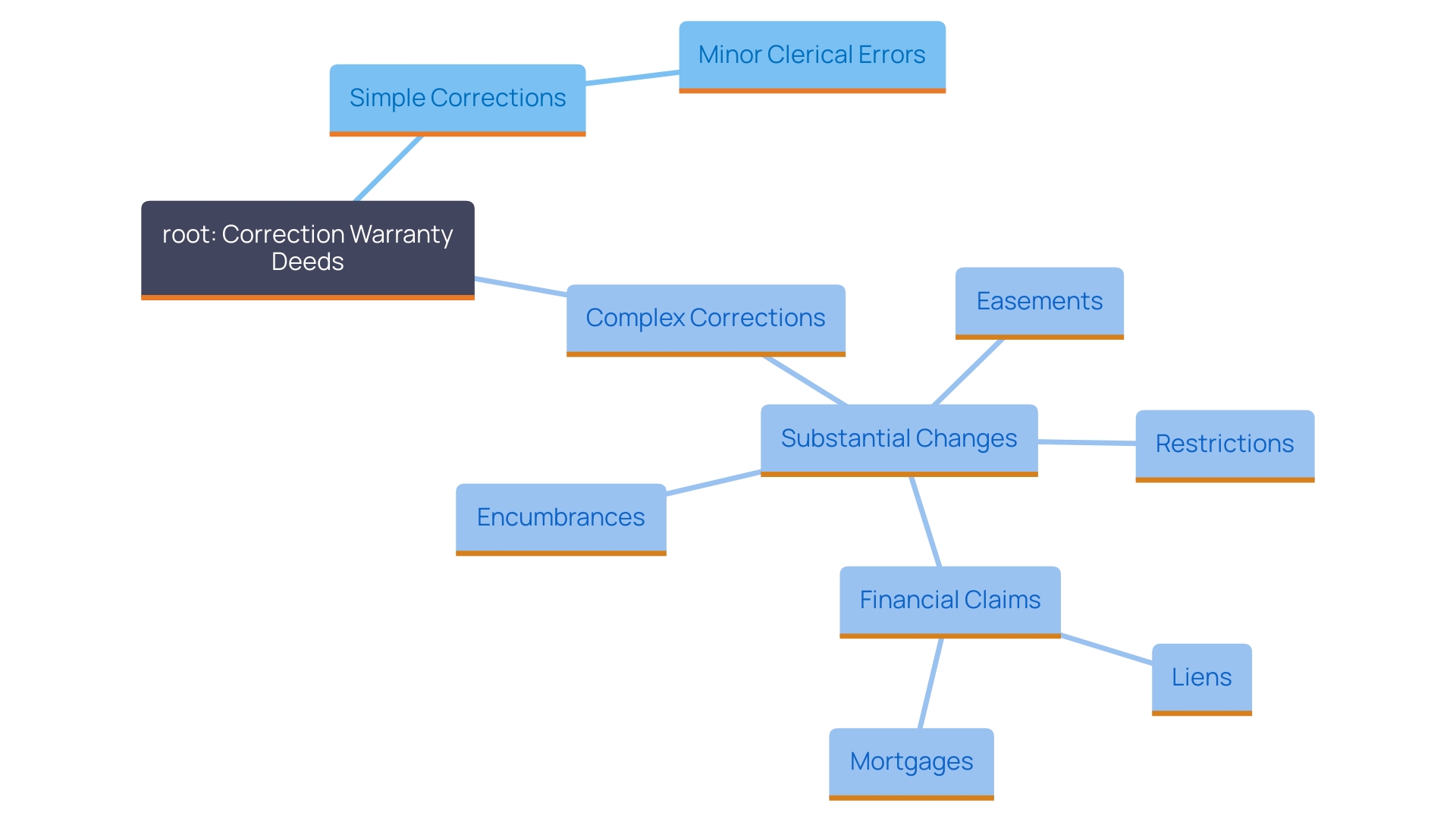
Legal Implications of Correction Warranty Deeds
The use of a Correction Warranty Deed carries notable . This deed ensures that the public record accurately reflects the true intentions of the parties involved, which is paramount in . For instance, in the historic case of Bruce’s Beach, the city of Manhattan Beach took land from Willa and Charles Bruce through eminent domain, despite their efforts to fight the takeover. If their title had been accurately and transparently documented, it might have provided stronger grounds for their court struggle.
Moreover, a Correction Guarantee Deed can help avoid future disagreements concerning by offering a clear, amended record. As noted by legal experts, “The exercise of discretion depends on several factors. One of the factors is the conduct of the plaintiff.” This principle underscores the importance of having an undisputed and precise title record, as equitable relief often hinges on and the proper conduct of all parties involved.
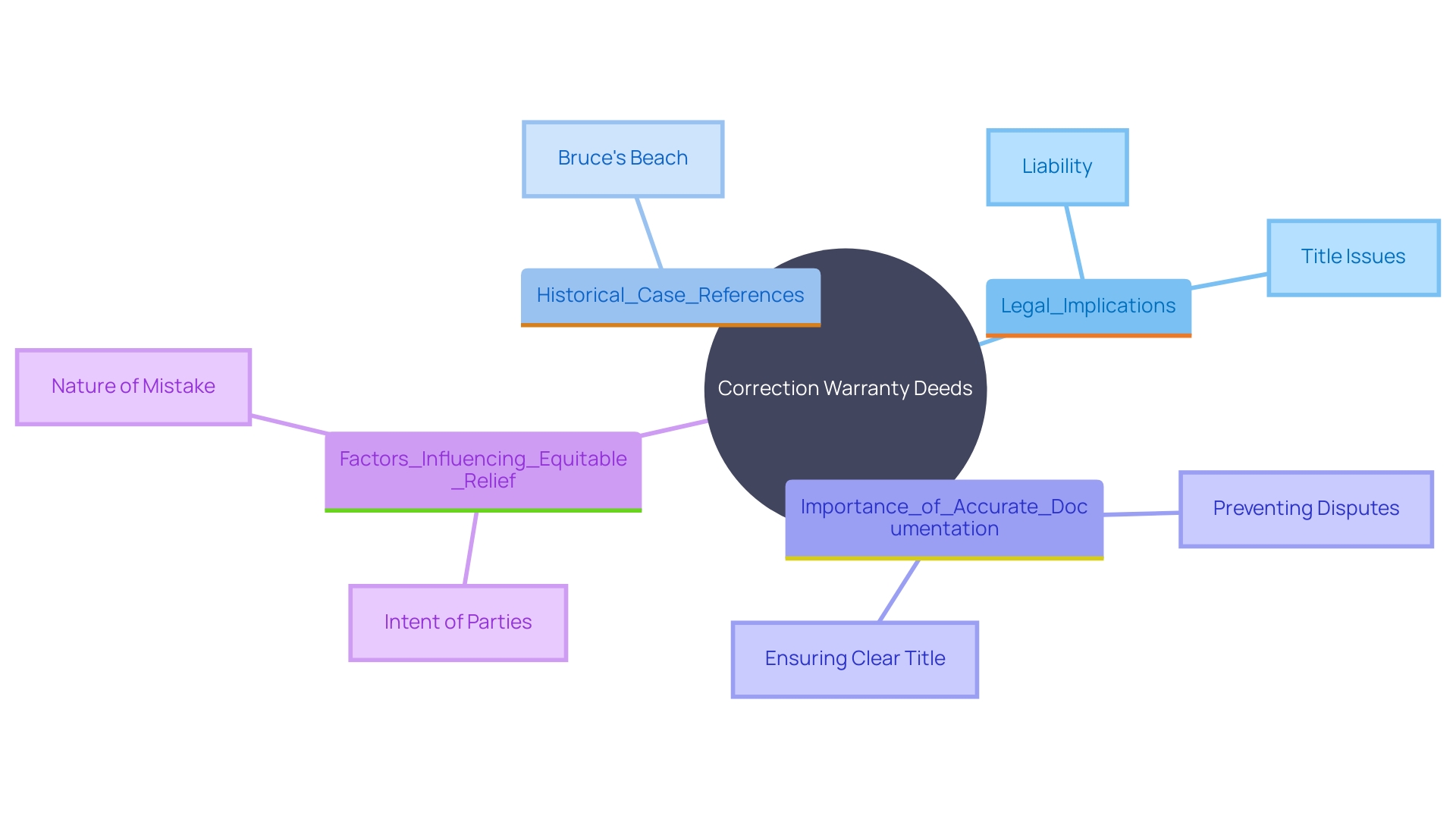
Limitations of Correction Warranty Deeds
While Correction Warranty Deeds are effective in , they are not without limitations. These actions cannot be used to change the fundamental terms of an agreement, nor can they address issues arising from fraud or misconduct. Furthermore, the execution and proper recording of a correction document are crucial to ensure its enforceability against third parties. As highlighted by expert Gitter & Lehrer PLLC, precise execution is crucial in ensuring the correction deed's validity and standing. For instance, in the case of Keionzie Clements, improper handling and enforcement of code violations led to significant legal complications, highlighting the importance of adhering to proper procedures in .
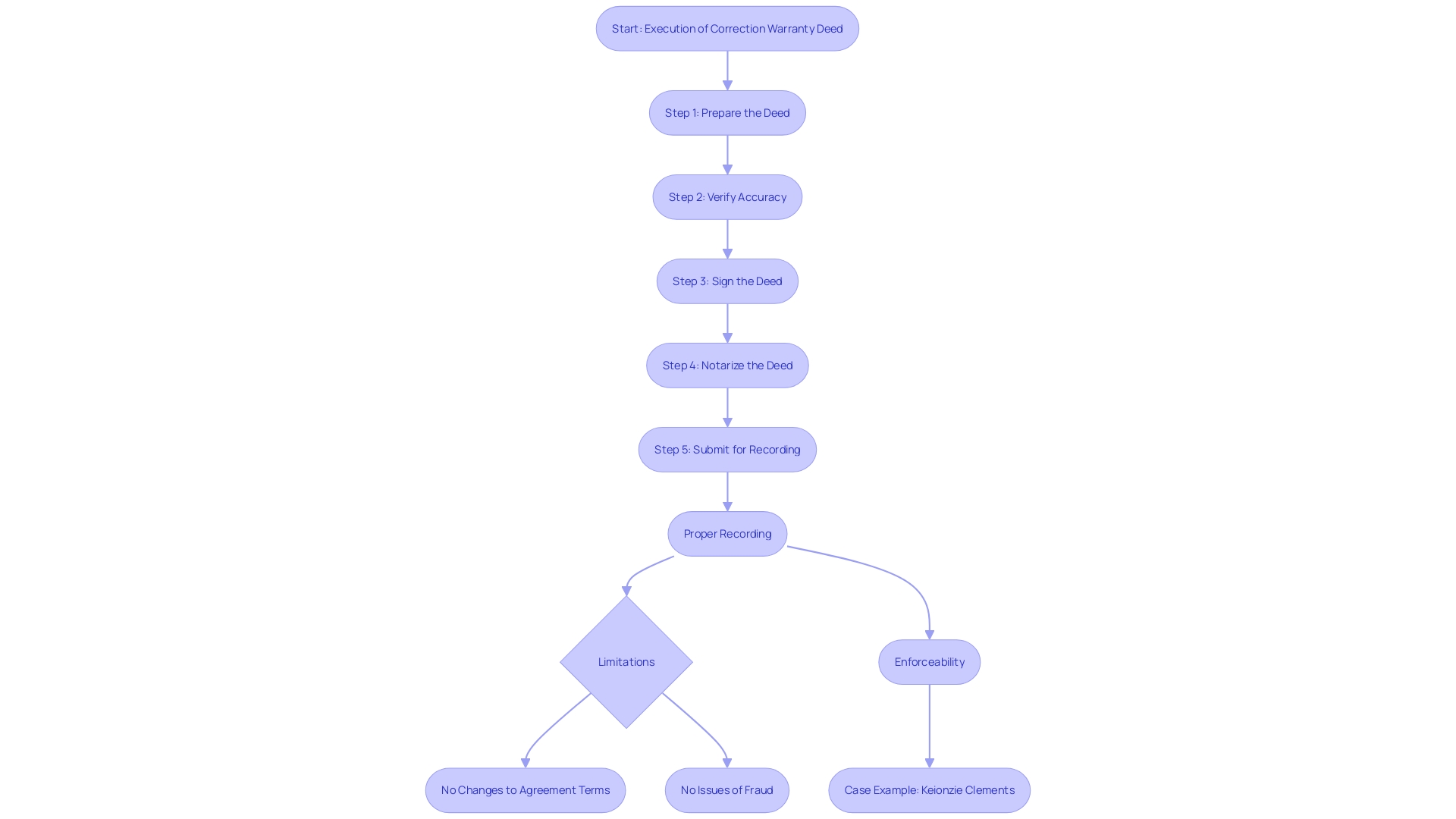
Alternatives to Correction Warranty Deeds
In certain situations, alternatives to Correction Warranty Deeds may be more suitable. Quitclaim instruments, for instance, transfer any interest in the property without warranty, making them ideal for resolving disputes where the grantor's title is not in question. Alternatively, new warranty deeds can be executed to clearly state the corrected terms and ensure clarity. The decision between these options hinges on the of the error, the parties involved, and the potential . Understanding the nuances of each option is crucial to avoid and additional costs.
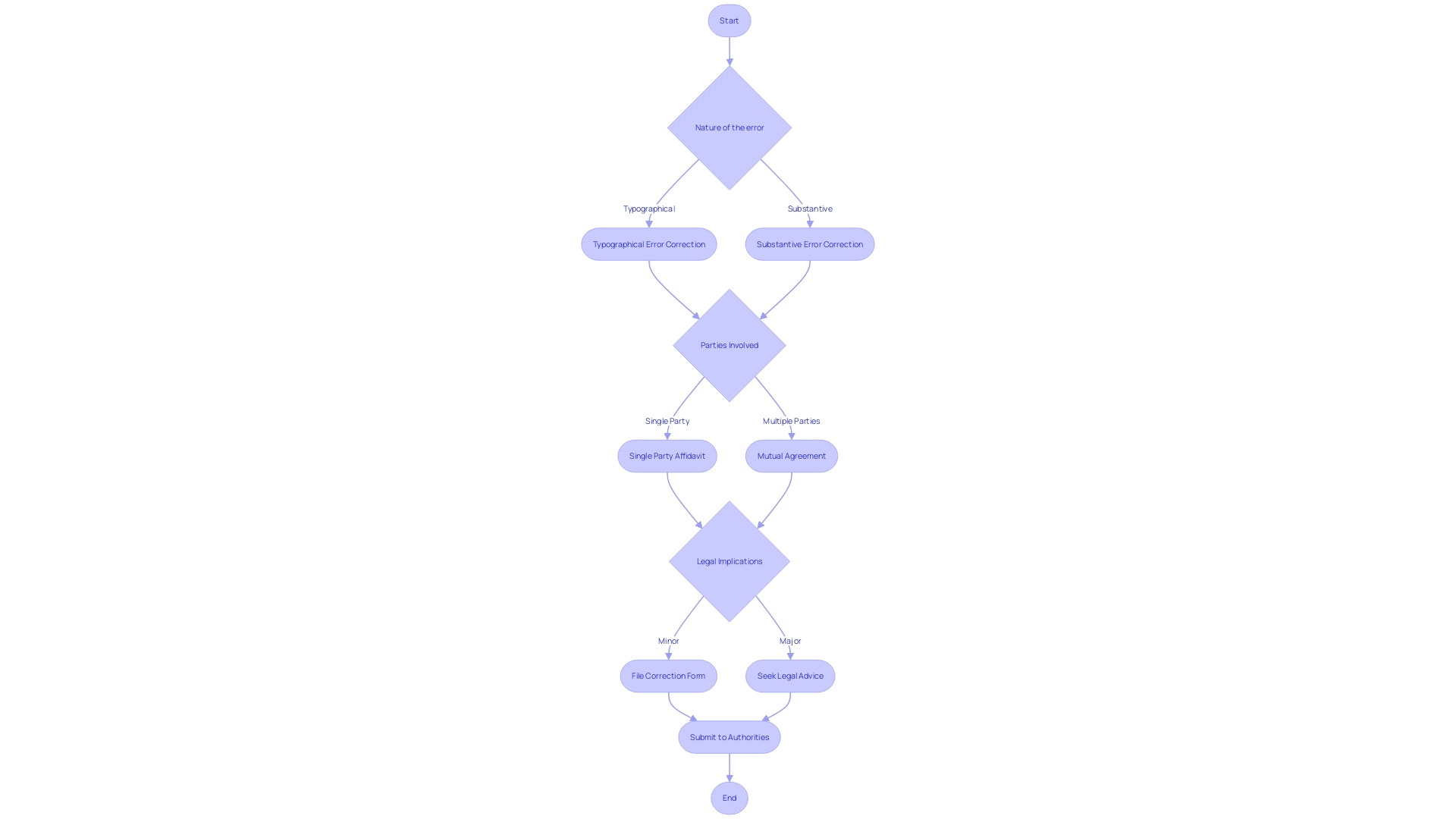
Conclusion
The importance of a Correction Warranty Deed in real estate transactions cannot be overstated. This legal instrument serves to amend errors in existing warranty deeds, ensuring that property records accurately reflect ownership details. By addressing typographical errors, inaccuracies in property descriptions, and other critical discrepancies, Correction Warranty Deeds play a vital role in maintaining the integrity of property titles and mitigating potential legal disputes.
Various types of errors necessitate the use of these deeds, ranging from minor clerical mistakes to significant misstatements that can complicate ownership rights. The increasing complexity of real estate transactions, driven by market dynamics and innovative financing strategies, underscores the need for precise documentation. Correction Warranty Deeds can be categorized into simple and complex types, tailored to the specific nature of the errors being corrected, thereby providing clarity and security in property records.
While Correction Warranty Deeds effectively rectify inaccuracies, they do have limitations. They cannot alter fundamental terms or address issues stemming from fraud, and their enforceability depends on proper execution and recording. Alternatives such as quitclaim deeds or new warranty deeds may be more appropriate in certain circumstances, highlighting the necessity for a thorough understanding of each option to avoid legal complications.
In conclusion, the use of Correction Warranty Deeds is essential for ensuring accurate and legally compliant property records. By providing a clear mechanism for correcting errors, these deeds help safeguard ownership rights and prevent future disputes, reinforcing the critical nature of precision in real estate transactions. The implications of accurate documentation extend beyond individual transactions, contributing to a more reliable and trustworthy property market.
Frequently Asked Questions
What is a Correction Warranty Instrument?
A Correction Warranty Instrument is a legal document used to amend an existing warranty instrument that contains errors or inaccuracies. It corrects mistakes such as incorrect names or asset descriptions without transferring ownership.
Why is a Correction Warranty Instrument necessary?
This instrument is essential for ensuring the accuracy and integrity of title documents. It helps to mitigate issues arising from discrepancies in asset records, providing a clear reflection of ownership details.
What types of mistakes can a Correction Warranty Instrument address?
Common mistakes include typographical errors in names, inaccuracies in asset descriptions, and misstatements about ownership interests. These often result from clerical errors during drafting or misunderstandings among involved parties.
What is the difference between a Correction Warranty Deed and a new warranty deed?
A Correction Warranty Deed clarifies and corrects existing records without transferring ownership, while a new warranty deed creates a new ownership record.
What are the types of Correction Warranty Deeds?
Correction Warranty Deeds can be simple, addressing minor clerical errors, or complex, dealing with substantial changes such as altering terms of the original agreement.
What are the legal implications of using a Correction Warranty Deed?
These deeds ensure that public records reflect the true intentions of parties involved, safeguarding ownership rights and potentially avoiding future disagreements regarding property ownership.
Are there limitations to Correction Warranty Deeds?
Yes, Correction Warranty Deeds cannot change the fundamental terms of an agreement or address issues arising from fraud or misconduct. Proper execution and recording are crucial for enforceability against third parties.
What alternative options are available instead of a Correction Warranty Deed?
Alternatives include Quitclaim instruments, which transfer interest without warranty, and new warranty deeds, which state corrected terms clearly. The choice depends on the specific circumstances of the error and potential legal implications.
How can I ensure the validity of a Correction Warranty Deed?
To ensure validity, precise execution is essential, as highlighted by legal experts. It is important to follow proper procedures during its execution and recording.
Why is meticulous review and verification important in real estate transactions?
Meticulous review is crucial to prevent misunderstandings and ensure accurate documentation, especially in complex transactions influenced by rising interest rates and construction costs.




